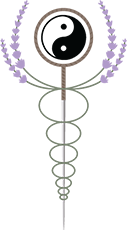The ancient science of Traditional Chinese Medicine (TCM) is a holistic system, which has evolved over millennia. At the core of TCM lies the belief that everything in the universe is interconnected. Body and mind are as much interconnected as organs and different parts of our bodies, and an imbalance to any part of our system results in discomfort and illness.
I completely agree with this approach and view of medicine and health. We are the sum of our mind, body, and soul, and our health and wellness come from within all those levels of our being. Being able to balance those levels allows us to find our true selves, and true happiness and that’s exactly what I want to help my patients achieve.
Your health is a very important and very personal matter, and I want you to be completely at ease and well-informed when making a decision on how to maintain and elevate your health and wellness – so I put together the FAQs of Lavender House Acupuncture & Wellness Clinic, a series of questions (and their answers) that I come across often.

1. How many hours of training do you have?
In B.C., there is quite a disparity in training between professions, in regards to using acupuncture needles. Most people are surprised to find out that registered acupuncturists have significantly more training with acupuncture needles than physiotherapists, chiropractors or allopathic doctors. I have received 3,750 hours of training for the Doctor of Traditional Chinese Medicine program at Pacific Rim College. Extensive training increases safety and positive outcomes for all my patients.
2. What do you look for when you ask to see my tongue?
Tongue diagnosis is a vital part of Traditional Chinese Medicine. The colour, shape and coating on the tongue reflects your internal conditions. I am able to diagnose if health is being influenced by deficiencies or excess conditions in regard to blood, qi (life energy), yin and/or yang. You can see an example of a tongue diagnosis chart here.
3. What does acupuncture feel like?
This is a tough one to answer. For most people the arrival of Qi when the needle is inserted to the appropriate depth brings about a sensation that they have never felt before. The most common descriptions that people give are heavy, tingly, bubbly, radiating, “weird”, and annoying. It should never been painful and if something is causing too much discomfort tell your practitioner right away, adjustments can be made to make it a more comfortable feeling.
4. How many treatments does it take?
This depends on three main variables: what the problem is we’re treating, how long you’ve been suffering from it, and how strong your body is going into the healing. Generally, the more chronic the problem is, the longer the treatment course is. Also, your body needs strong Qi in order for healing to occur. If your body is weak we often have to build up systems before tackling the main complaint. Acupuncture is not a one treatment miracle cure, rather it is cumulative in its effects. It’s like going to the gym, you don’t see results on the first workout but if you stick with it on a regular basis you will see improvements in cardio, muscle tone, etc. to achieve your goal.
5. What should I do to prepare for a treatment?
There are several things you can do to prepare for a successful treatment:
- Write down and bring with you any questions/concerns that you may have. It’s easy to forget stuff while you are at your appointment so its good to come with everything written down. Chinese medicine doesn’t work on a “one complaint per visit” basis, we truly want to know everything.
- Wear loose fitting clothing. The majority of acupuncture points are located from the elbows down to the hands and from the knees down to the feet.
- Have time available after your appointment to relax and let the effects set in.
- Between visits, keep track of any changes that may have occurred, such as decrease in pain, moving pain, or changes in the intensity or frequency of other symptoms.
6. What other modalities do you use?
- Cupping: using plastic or glass cups a vacuum is created to stimulate the flow of blood and Qi in the superficial muscle layers. This therapy can aid in many problems ranging from releasing muscle tension to treating coughs and common colds.
- Gua Sha: a technique used to release muscle tension, tightness, and fascial constriction. Using a specialized tool, I gently scrape the skin over the affected area. Gua Sha feels similar to a deep tissue massage.
- Moxibustion: The herb mugwort is prepared into sticks that are lit on one end or placed on the end of a needle or over salt. The lit cherry produces infrared heat/light which adds energy to acupuncture points and increases blood flow.
- Reiki: hands on energy work.
7. Is acupuncture safe for children?
Yes, acupuncture is safe for children. Needles are retained for a much shorter period of time, often just a quick in and out. They often respond much faster than adults and require fewer treatments.
Do you have any additional questions? Connect with me via my contact page or on Facebook – I’m happy to answer any questions you may have!

